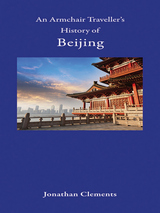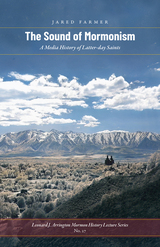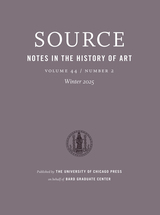6 books about Armchair Traveller's History

An Armchair Traveller's History of Apulia
Desmond Seward
Haus Publishing, 2013
An Armchair Traveller's History of Apulia is the story of the heel of Italy - Puglia - as told by past and present day travellers. It has beautiful landscapes, cave towns and frescoed grotto churches, wonderful old cities with Romanesque cathedrals, Gothic castles and a wealth of Baroque architecture. And yet, while far from inaccessible, until quite recently it was seldom visited by tourists. This portrait of Apulia concentrates on the Apulian people down the ages. Conquerors, whether Messapians, Greeks, Romans, Arabs, Lombards, Byzantines, Normans, Angevins, Germans or Spaniards, have all left their mark on the region in a cultural palimpsest that at first sight bewilders, but which hugely repays investigation. Arranged in short chapters, the narrative travels from north to south, making it an ideal companion for exploring Apulia by car. The Gazetteer, which is cross-referenced to the main text, highlights cities, churches, cathedrals, castles and sites of historical importance to the visitor. For travellers on the ground or students at their desks, this elegant, cloth-bound book will prove invaluable.
[more]

An Armchair Traveller's History of Beijing
Jonathan Clements
Haus Publishing, 2016
As China’s global influence continues to rise, its capital, Beijing, has become increasingly important—and a popular tourist destination, greeting close to five million international visitors each year. An Armchair Traveller’s History of Beijing presents the capital from its earliest beginnings as a prehistoric campsite for Peking Man through its fluctuating fortunes under a dozen dynasties.
Home to capitals of several states over time, the site of modern Beijing has been ruled by Mongolian chiefs and the glorious Ming emperors, whose tombs can still be found on its outskirts. Through Beijing, we can experience Chinese history itself, including its more famous residents—including Khubilai Khan, Mulan, and Marco Polo. Special emphasis is placed on Beijing’s precarious heritage in the twenty-first century, as modern construction wipes out much of the old city to make way for homes for twenty million people.
This book also offers detailed information on sites of tourist interest, including the pros and cons of different sections of the Great Wall and the best ways to see the Forbidden City and the fast-disappearing relics of the city’s Manchu and Maoist eras. A chapter on food and drink examines not only local delicacies, but the many other Chinese dishes that form part of Beijing’s rich dining traditions. With its blend of rich history and expert tips, An Armchair Traveller’s History of Beijing is an essential introduction to one of the world’s most remarkable cities.
Home to capitals of several states over time, the site of modern Beijing has been ruled by Mongolian chiefs and the glorious Ming emperors, whose tombs can still be found on its outskirts. Through Beijing, we can experience Chinese history itself, including its more famous residents—including Khubilai Khan, Mulan, and Marco Polo. Special emphasis is placed on Beijing’s precarious heritage in the twenty-first century, as modern construction wipes out much of the old city to make way for homes for twenty million people.
This book also offers detailed information on sites of tourist interest, including the pros and cons of different sections of the Great Wall and the best ways to see the Forbidden City and the fast-disappearing relics of the city’s Manchu and Maoist eras. A chapter on food and drink examines not only local delicacies, but the many other Chinese dishes that form part of Beijing’s rich dining traditions. With its blend of rich history and expert tips, An Armchair Traveller’s History of Beijing is an essential introduction to one of the world’s most remarkable cities.
[more]

An Armchair Traveller's History of Cambridge
Richard Tames
Haus Publishing, 2014
An Armchair Traveller's History of Cambridge provides not only a narrative of the city and university, and a guide to visits within a short driving distance, it also features a variety of aspects ignored in other accounts: food and fashion, music and gardens, books and clubs, Cambridge contributions to poetry, theatre and sport, royal associations and links with the Arab world and China. Cambridge offers the splendour of King's College Chapel and the beauty of "the Backs" but also outstanding collections of fans and fritillaries, sculpture and stained glass, medieval coins and oriental manuscripts. Free attractions include the world-class Fitzwilliam Museum and Botanic Gardens, quirky Kettle's Yard, and museums devoted to Archaeology, Anthropology, Zoology, Earth Sciences, Polar Research and the History of Science—plus Britain's oldest bookshop. Enter the world of "Bumps and Bedders" and learn why May Week is in June. Research reveals that most visitors to Cambridge never venture more than four hundred yards from the Market Square. An Armchair Traveller's History of Cambridge will help you do better than that—and want to.
[more]

An Armchair Traveller's History of Finland
Jonathan Clements
Haus Publishing, 2014
In the American mind, Finland is often swept up in the general group of Nordic countries, little known and seldom gaining prominence on its own. But as Jonathan Clements shows in An Armchair Traveller’s History of Finland, it has a long and fascinating history, one that offers oddities and excitements galore: from prehistoric herders to medieval lords, Christian martyrs and Viking kings, and the war heroes who held off the Soviet Union against long odds.
Clements travels the length of the country as he tells these stories, along the way offering accounts of Finland’s public artworks, literary giants, legends and folktales, and famous figures. The result is the perfect introduction to Finland for armchair and actual travelers alike.
Clements travels the length of the country as he tells these stories, along the way offering accounts of Finland’s public artworks, literary giants, legends and folktales, and famous figures. The result is the perfect introduction to Finland for armchair and actual travelers alike.
[more]

An Armchair Traveller's History of Istanbul
City of Remembering and Forgetting
Richard Tillinghast
Haus Publishing, 2013
The author is an old Istanbul hand who has seen it change over the years from a provincial backwater to today's vibrant metropolis. With Tillinghast as a guide through Istanbul's cafés, mosques and palaces, and along its streets and waterways, readers will feel at home both in the Constantinople of bygone days and on the streets of the modern town.
[more]

An Armchair Traveller's History of Tokyo
Jonathan Clements
Haus Publishing, 2018
With almost 13 million residents, Tokyo is now as much an icon of modernity as it is a city, with its neon-lit billboards, futuristic technology, and avant-garde fashion scene. But the long and fascinating history of Japan’s modern capital encompasses much, much more, and in An Armchair Traveller’s History of Tokyo, Jonathan Clements sketches the city’s amazing trajectory from its humble beginnings as a group of clearings in a forest on the Kanto plain all the way to its upcoming role as host of the 2020 Olympic Games.
Tokyo, meaning “Eastern Capital,” has only enjoyed that name and status for 150 years. Before that, it was a medieval outpost designed to keep watch over rich farmlands. But this seemingly unassuming geographical location ultimately led to its status as a supercity. Though the imperial court ruled Japan from the sleepy city of Kyoto, the landowners of the Kanto plain where Tokyo lies held the true wealth and power in Japan, which they eventually asserted in a series of bloody civil wars. The Tokyo region became the administrative center of Japan’s Shogun overlords and the site of a vibrant urban culture home to theaters, taverns, and brothels. After the Meiji Restoration in 1868, it became Japan’s true capital, home to the emperors, the seat of government, and a site of rapid urban growth.
Anyone who’s ever longed to look upon Mount Fuji, embody the bravery of the Samurai, or savor the world’s finest sushi will find themselves transported from the comfort of their armchair while reading Clements’s account of Tokyo.
Tokyo, meaning “Eastern Capital,” has only enjoyed that name and status for 150 years. Before that, it was a medieval outpost designed to keep watch over rich farmlands. But this seemingly unassuming geographical location ultimately led to its status as a supercity. Though the imperial court ruled Japan from the sleepy city of Kyoto, the landowners of the Kanto plain where Tokyo lies held the true wealth and power in Japan, which they eventually asserted in a series of bloody civil wars. The Tokyo region became the administrative center of Japan’s Shogun overlords and the site of a vibrant urban culture home to theaters, taverns, and brothels. After the Meiji Restoration in 1868, it became Japan’s true capital, home to the emperors, the seat of government, and a site of rapid urban growth.
Anyone who’s ever longed to look upon Mount Fuji, embody the bravery of the Samurai, or savor the world’s finest sushi will find themselves transported from the comfort of their armchair while reading Clements’s account of Tokyo.
[more]
READERS
Browse our collection.
PUBLISHERS
See BiblioVault's publisher services.
STUDENT SERVICES
Files for college accessibility offices.
UChicago Accessibility Resources
home | accessibility | search | about | contact us
BiblioVault ® 2001 - 2025
The University of Chicago Press









